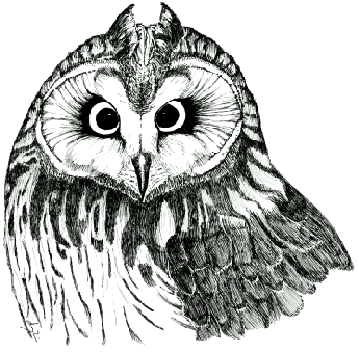The Short-eared Owl is highly migratory. Most individuals spend the winter in the USA, and only a few remain in the southern parts of British Columbia, the prairies, and Ontario. The Short-eared Owl is a ground-dwelling species which prefers open areas such as prairies, grasslands, tundra, and wetlands. Small mammals are its main prey, especially voles and mice, but it will also hunt birds if they are easily available. In winter, the Short-eared Owl often seeks shelter in trees near suitable hunting areas, and may gather in small groups at these sites. To support the prey which a Short-eared Owl hunts, a breeding territory of at least 100 hectares in size is needed. For nesting, the Short-eared Owl requires a sheltered area on the ground where vegetation is high enough to conceal the incubating female from potential predators. This is the only owl to build its own nest, although it is quite simple, consisting just of a scrape dug into the ground and lined with grasses. Normally 5 to 6 eggs are laid, which are incubated for approximately four weeks. The chicks begin to wander away from the nest when only 14 to 18 days, and may start to fly before they are even four weeks old. Short-eared Owls usually remain dependent on their parents for food until they are almost two months old. Conservation concerns: Since 1994, the Short-eared Owl has been considered threatened or vulnerable in all parts of Canada. The Canadian population is estimated to have declined by 43% between 1966 and 1989, and has likely become even smaller since then. The loss of grassland and wetland habitat appears to be the main threat to the existence of the Short-eared Owl. Nests are sometimes destroyed when vegetation is mowed midway through the breeding season. If mowing occurs earlier in the season, there may not be enough vegetation to conceal the nest, resulting in a high rate of breeding failure due to predation. Efforts need to be made to preserve existing grassland areas, and to encourage landowners to leave part of their property in a natural state. However, populations have declined even in undisturbed areas, suggesting that there are also other undiscovered problems which need to be addressed. |
